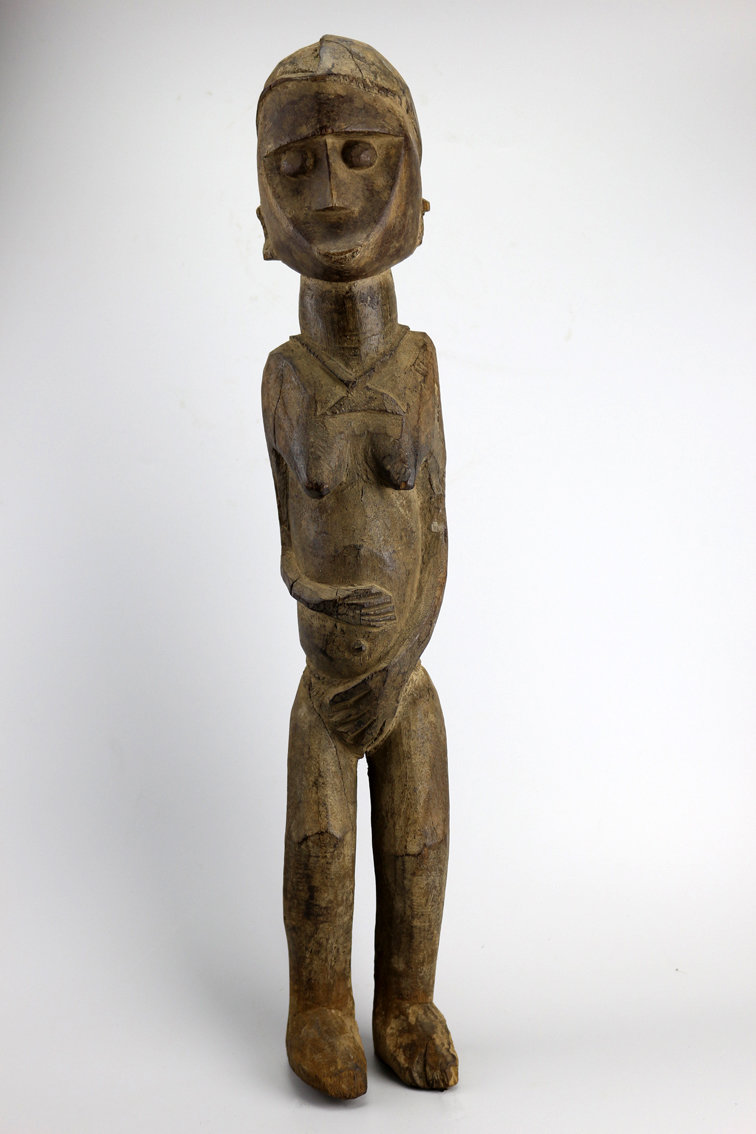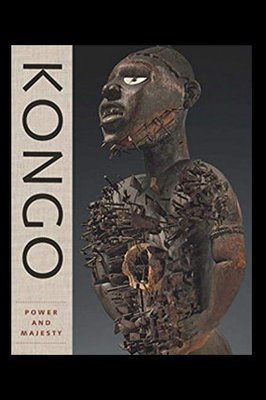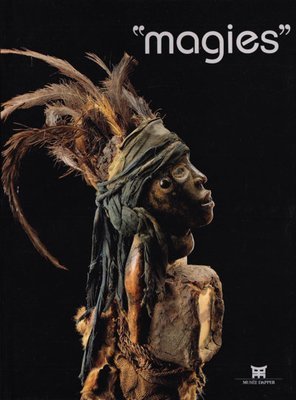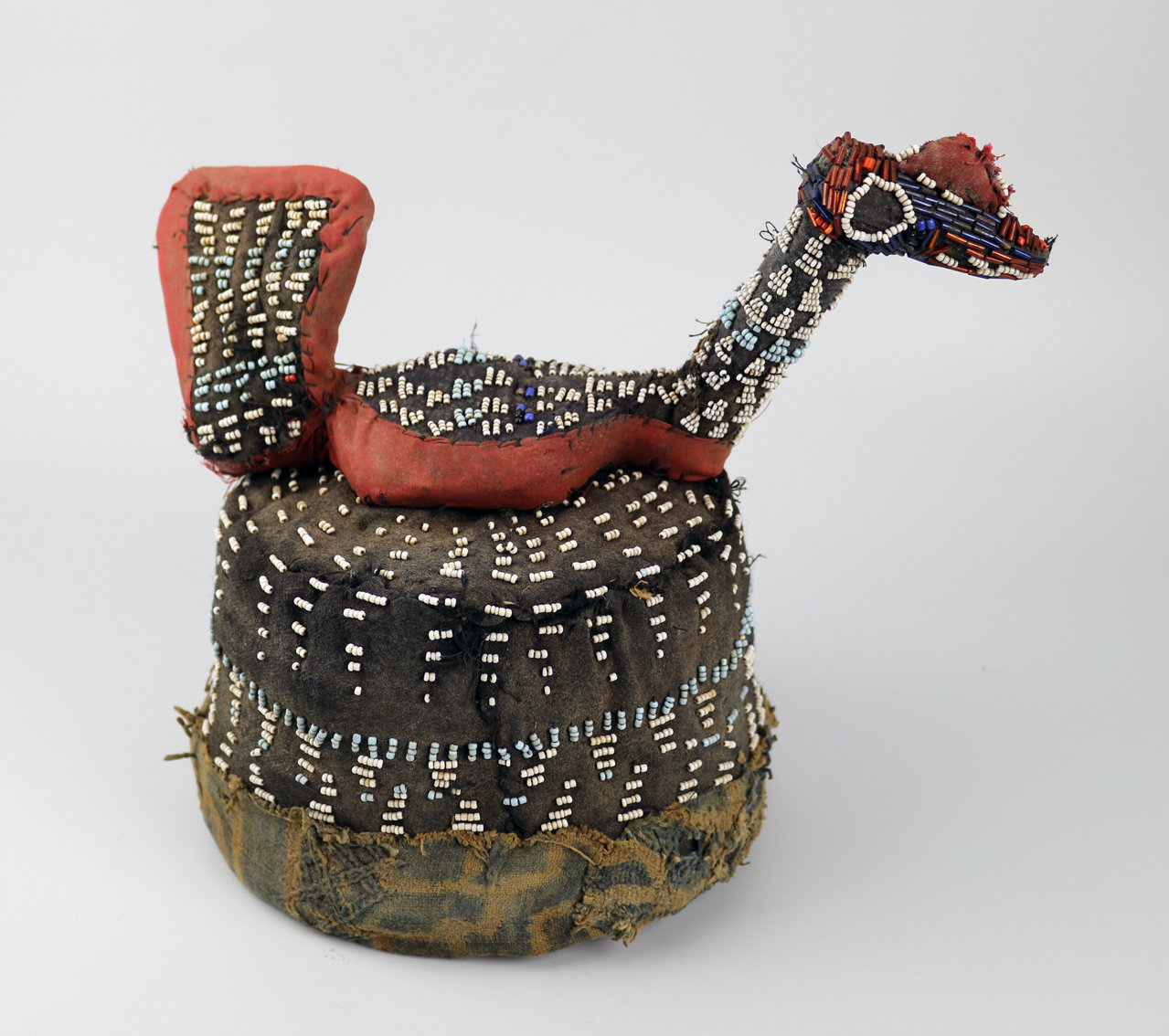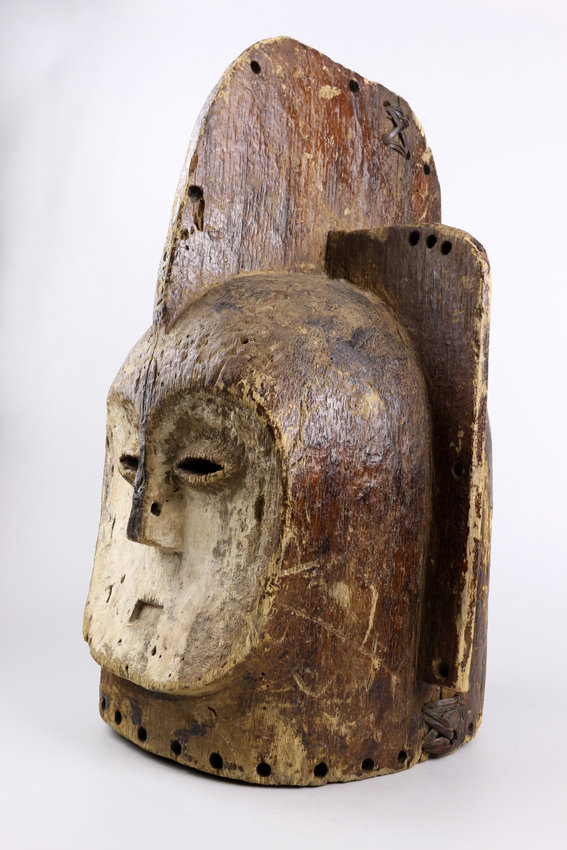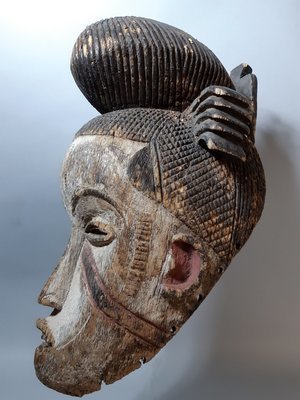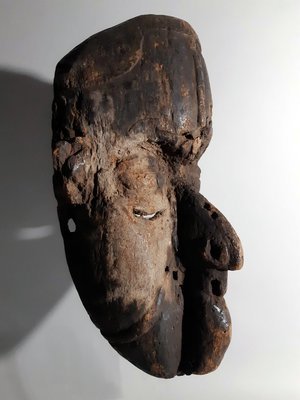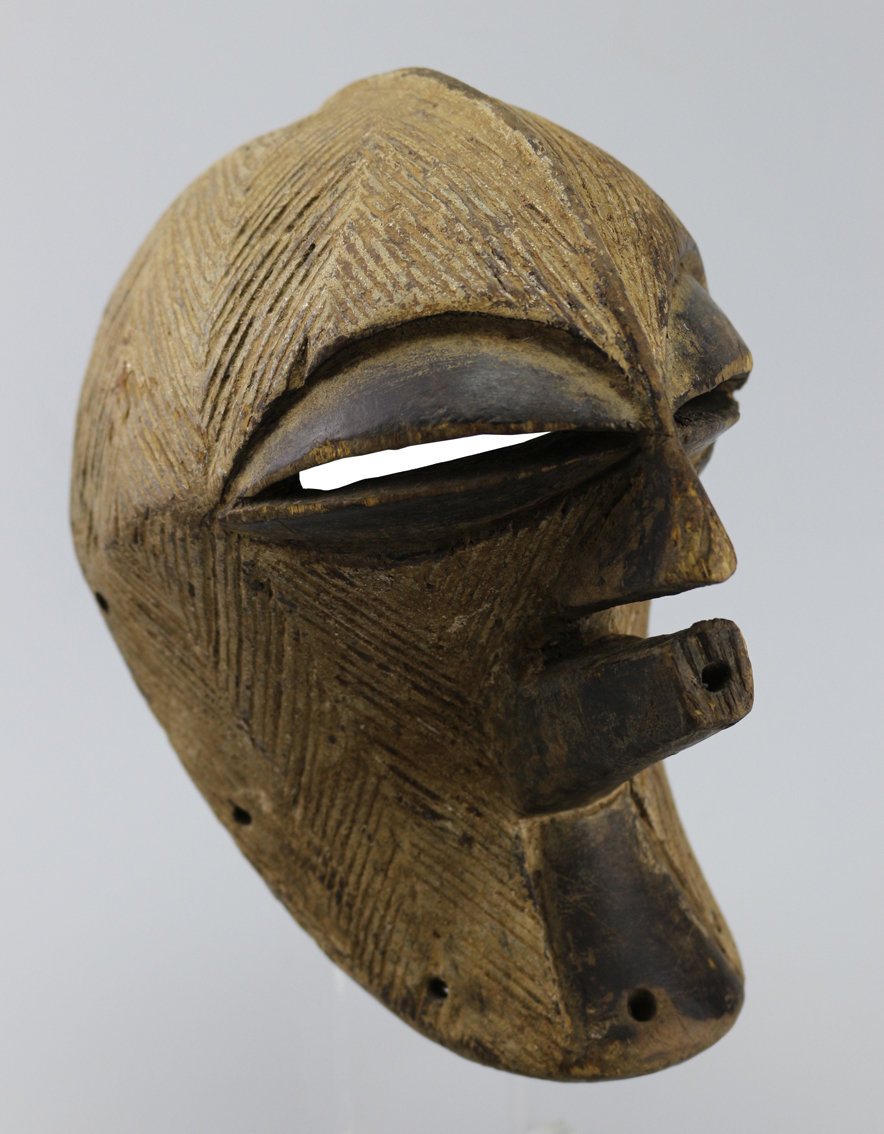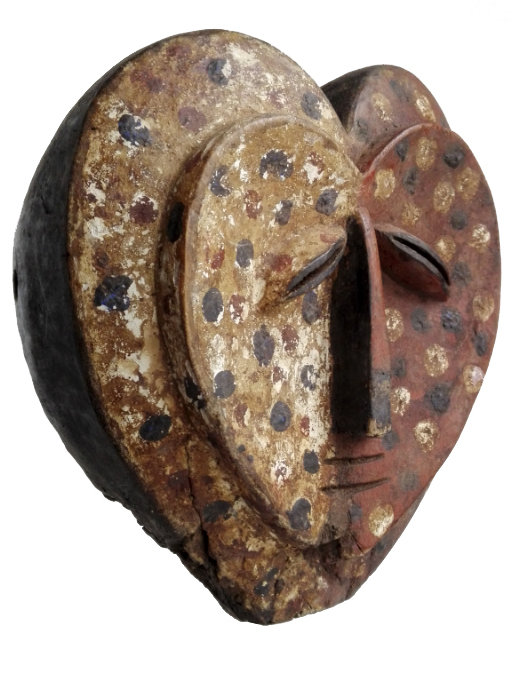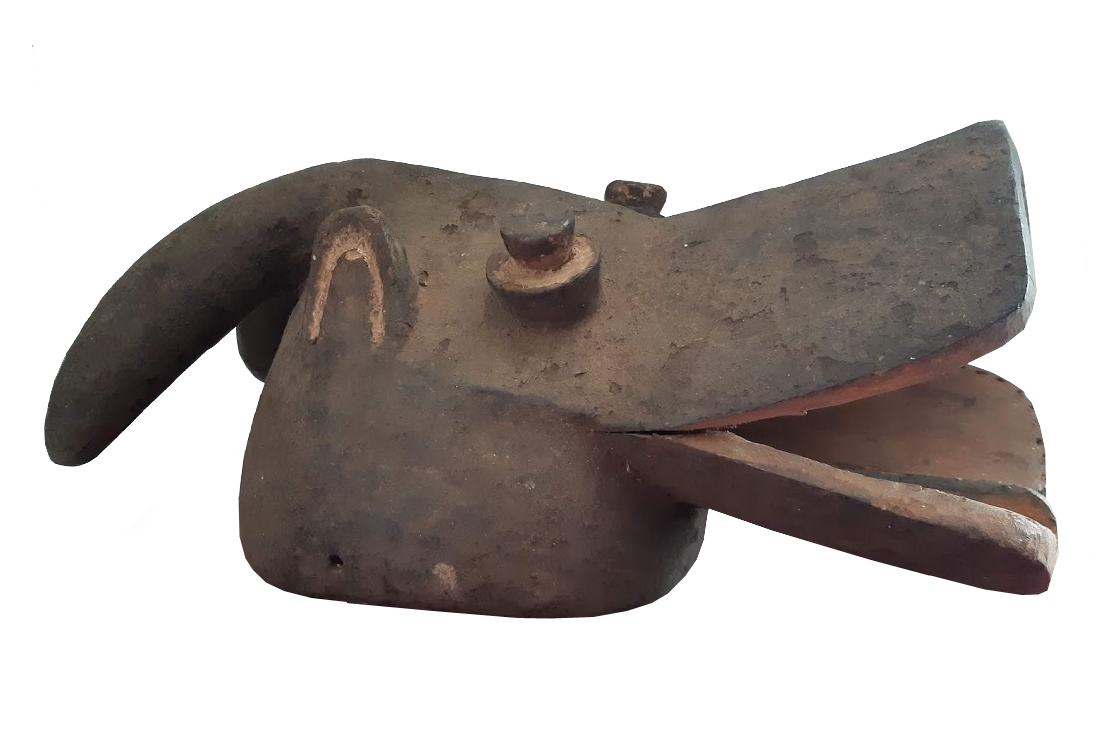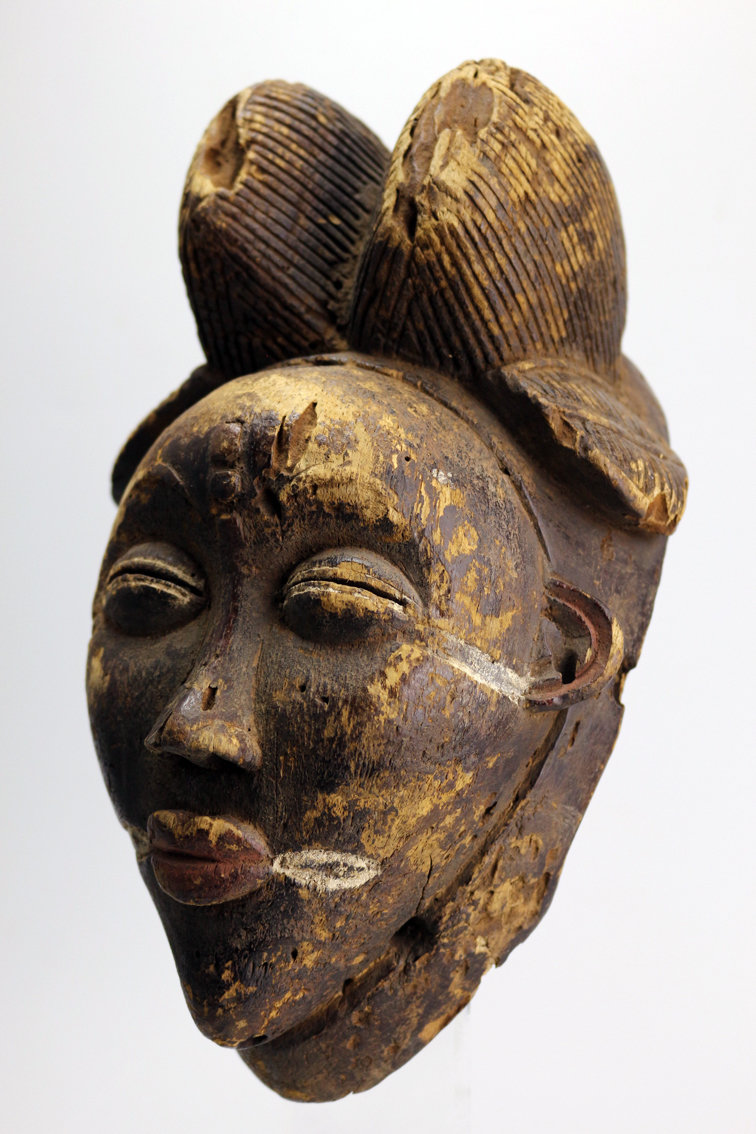-
Quick View€5,500.00
Important Lobi statuette, Burkina Faso
The Lobi live in southwestern Burkina Faso and northern Côte d’Ivoire and Ghana. they are extremely resistant to any form of centralized political authority. Instead their communities are based on the laws of God. The central figure in each Lobi community is the religious specialist named the Thildar. this soothsayer is responsible for communicating with the spirits that govern the community and protecting members of each family from accidents, illness, violence and all the multiple threats people encounter in the hostile environment of West Africa . The carved Lobi represent the spirits of nature they called Thil. Each of these figures displays different gestures or postures, some of them can have two or even three heads, some female figures carry a baby under the arm. These unique characteristics represent the particular talent or power of the spiritual being they embody. A figure raising an arm places a roadblock at the entrance of the malicious spirits at the family home.
***
Important Lobi statuette, Burkina FasoThe Lobi live in southwestern Burkina Faso and northern Ivory Coast and Ghana. they are extremely resistant to any form of centralized political authority. Instead of their communities are based on the laws of God. The central figure in every Lobi community is the religious scholar named Thildar. this diviner is responsible for communicating with the spirits that govern the community and protecting the members of each family against accidents, illness, violence and all the multiple threats people encounter in the hostile environment of West Africa. The sculpted Lobi represent the spirits of nature they called Thil. Each of these figures displays different gestures or postures, some of them may have two or even three heads, some female figures carry a baby under the arm. These unique characteristics represent the particular talent or power of the spiritual being they embody. A character raising an arm places a checkpoint at the entrance of malicious spirits at the family home.
***
Wichtige Lobi Statuette, Burkina FasoDie Lobi leben im Südwesten von Burkina Faso und der nördlichen Elfenbeinküste und Ghana. Sie sind extrem resistent gegenüber jeder Form zentralisierter politischer Autorität. Statt ihrer Gemeinschaften basieren sie auf den Gesetzen Gottes. Die zentrale Figur in jeder Lobi-Gemeinschaft ist der Religionswissenschaftler Thildar. Dieser Wahrsager ist verantwortlich für die Kommunikation mit den Geistern, die die Gemeinschaft regieren und schützt die Mitglieder jeder Familie vor Unfällen, Krankheiten, Gewalt und all den vielfältigen Bedrohungen, denen Menschen in der feindseligen Umgebung Westaf. Die skoquerierten Lobi repräsentieren die Geister der Natur, die sie Thil nannten. Jede dieser Figuren zeigt verschiedene Gesten oder Haltungen, einige von ihnen können zwei oder sogar drei Köpfe haben, einige weibliche Figuren tragen ein Baby unter dem Arm. Diese einzigartigen Eigenschaften repräsentieren das besondere Talent oder die Kraft des spirituellen Wesens, das sie verkörpern. Ein Charakter, der einen Arm anhebt, platziert einen Kontrollpunkt am Eingang von bösartigen Geistern im Haus der Familie.
- Quick View
-
Quick View€210.00
Un examen convaincant de l’un des royaumes africains les plus riches et les plus créatifs du point de vue artistique
Les artistes du royaume de Kongo – une vaste bande d’Afrique centrale qui englobe aujourd’hui la République du Congo, la République démocratique du Congo et l’Angola – ont été à l’origine de réalisations créatives exceptionnelles. Avec l’afflux de marchands, missionnaires et explorateurs portugais, hollandais et italiens, Kongo a développé une tradition artistique unique associant l’iconographie européenne à de puissantes formes d’art indigènes. Un engagement initialement positif avec l’Europe au 15ème siècle est devenu turbulent à la suite des déplacements ultérieurs, de la guerre civile et de la traite des esclaves – et nombre des œuvres d’art créées à Kongo reflètent les temps nouveaux.
Cette étude complète est le premier catalogue majeur à explorer l’histoire, les formes d’art et l’identité culturelle du Kongo avant, pendant et après le contact avec l’Europe. Les objets vont des figures «mère et enfant» du XVe siècle, qui reflètent une époque où les Européens et leurs motifs chrétiens étaient vus favorablement, les redoutables mangaaka, des figures du pouvoir qui véhiculaient la force au milieu de la dissolution du royaume. Très abondamment illustré de nouvelles photographies et de vues multiples d’œuvres en trois dimensions, ce livre présente l’héritage artistique fascinant et complexe de l’un des royaumes les plus importants d’Afrique.
- 308 pages
- Publisher: Metropolitan Museum of Art (September 29, 2015)
- Language: English
-
Quick View
Revêtu de matières minérales ou végétales, de substances organiques prélevées sur les animaux ou sur les hommes, le corps des statuettes réanime les forces vitales perturbées par la maladie ou par le malheur. Les objets actifs, mémoires de douleur, de guérison et d’espoir, de vie et de mort, sont œuvres d’art, taillés d’abord par les sculpteurs, puis animés par les officiants des cultes, prêtres, devins et guérisseurs.
Auteurs : Christiane Falgayrettes-Leveau, Suzanne Preston Blier, Youssouf Tata Cissé, Arthur P. Bourgeois
Format : 24 x 32 cm – 272 pages – 138 illustrations couleurs et 17 illustrations noir et blanc.
Éditions Dapper, 1996.
-
Quick View€2,100.00
Bamileke pearl mask, Cameroon
The Bamileke are a people of Central Africa, coming from Cameroon (West region) in the Grassland region where the Bamoun, Tikar also live, close to them by their common ancestors, their neighboring social structures and their languages. .
The work of D. Toukam (“History and anthropology of the Bamileke people”, Paris, L’Harmattan, 2010 and 2016; …) conclude that the Bamileke would most likely come from the Baladis of ancient Egypt (natives of Upper -Egypt). In Egypt, the current Feelahins / Copts are largely recognized as Baladis converted by force, but still retaining huge parts of their ancestral culture. Departing from Upper Egypt in the 9th century AD, the Baladis-Bamileke arrived in the Tikar region in the 12th century. They were neighbors of the Tikar, but were never descendants of Tikar, contrary to popular belief.
The Bamilekes are, in spiritual matters, of great complexity. The whole of their traditional religious organization is composed of initiation practices, meditations and rituals.
Their production of objects related to their different cults has been very rich and some cults are still in progress today by exploiting ancient masks kept in certain chiefdoms or with certain notables or pieces called ” replacement “created to replace old worn, too damaged parts or because the use was limited in time.
-
Quick View€8,500.00Masque heaume, à une seule face, taillée dans un bois très léger. Sur l’extrémité supérieure, est visible une crête.
-
Quick View€3,100.00The Idoma are an ethnolinguistic group that mainly inhabits the western regions of Benue, Nigeria, and related groups are found in Cross Rivers State, Enugu State and Nasarawa State in Nigeria. The Idoma language is classified in the Akweya subgroup of the idomoid languages of the Volta family – Niger, which includes the Alago, Agatu, Etulo and Yala languages of the Benue, Nasarawa and Northern Cross states. The Akweya subgroup is closely linked to the Yatye-Akpa subgroup. Most of the territory is inland, south of the Benue River, some seventy-two kilometers east of its confluence with the Niger River. The Idomas are known to be classy “warriors” and “hunters”, but welcoming and peace-loving. Most of the land of Idoma remained largely unknown in the West until the 1920s, leaving much of the colorful traditional culture of Idoma intact. The population of Idoma is estimated at around 4 million. The Idoma people have a traditional chief called Och’Idoma who is the head of the Traditional Council of the region of Idoma while each community has its own traditional chief such as Ad’Ogbadibo d’Orokam, chief of Enenche. The palace of the Och’Idoma complex is located in Otukpo, in the state of Benue. The Idoma people have a traditional chief called Och’Idoma who is the head of the Traditional Council of the region of Idoma while each community has its own traditional chief such as Ad’Ogbadibo d’Orokam, chief of Enenche. The palace of the Och’Idoma complex is located in Otukpo, in the state of Benue. The Idoma people have a traditional chief called Och’Idoma who is the head of the Traditional Council of the region of Idoma while each community has its own traditional chief such as Ad’Ogbadibo d’Orokam, chief of Enenche. The palace of the Och’Idoma complex is located in Otukpo, in the state of Benue.
-
Quick View€1,250.00
Igbo mask – Nigeria
The Igbo people are an ethnic group from present-day south-central and south-eastern Nigeria. Geographically, the homeland of the Igbo is divided into two unequal sections by the Niger River – an eastern part (which is the larger of the two) and a western part. The Igbo are one of the most important ethnic groups in Africa.The Igbo language is divided into many regional dialects, and somewhat mutually intelligible with the larger group “Igboid”.In rural Nigeria, the Igbo are mainly artisans, farmers and traders. The main crop is yam [The other staple crops are cassava and taro. The Igbos are also highly urbanized, with some of the largest metropolitan areas, towns and villages in Igboland.Before British colonial rule in the 20th century, the Igbo were a politically fragmented group, with a number of centralized chiefdoms such as Nri, Arochukwu, Agbor and Onitsha. Unaffected by the Fulani War and the spread of Islam in Nigeria in the 19th century, they became predominantly Christians under colonization. As a result of decolonization, the Igbo have developed a strong sense of ethnic identity. During the Nigerian civil war of 1967-1970, the Igbo territories became the Republic of Biafra. Small Igbo ethnic populations are found in Cameroon and Equatorial Guinea, as well as outside of Africa. - Quick View
-
Quick View€4,100.00Eastern Gabon. The region of Mékambo, in eastern Gabon, is populated by several groups which have developed over the past centuries all kinds of contacts: commercial, matrimonial, linguistic and cultural. They are the Kota-Mahongwe, the Bakota proper, the Bungom and the Kwele of the West. The transmission of plastic elements (shapes and decorations) took place within initiations, in particular that of mungala, reserved for young people. We note in this area the importance of the rituals linked to the notion of ngoye (literally, the “panther”), a vital principle that we seek to find in the impetants of satsi, the circumcision ceremony. Most of the masks in the region, from different communities, are thus decorated with the colors of the mythical fawn’s fur, with a red background, dotted with white and black eyespots. Other masks, often animal (“ekuk”), came to the Kota of Mékambo, from the Kwéle regions of neighboring North Congo. We find the horns of the antelope and a contrasting black and white decor, with the recognizable morphology of the eyes stretched into almond.Literature: “The native forests”, Musée du Quai Branly, 2017, p.117 – fig. 7.
-
Quick View€1,600.00
-
Quick View€2,600.00
Recently added item(s)
